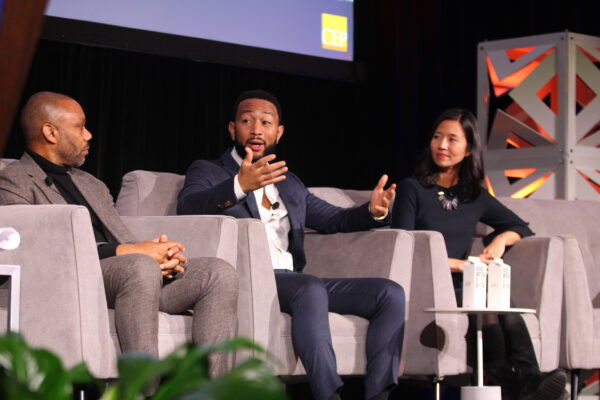Don’t let anyone tell you differently: making meaningful progress on our toughest societal challenges is extremely difficult.
There is no magic formula. And a big ego doesn’t help. ![]()
That is certainly true in education, where all stripes of donors have spent heavily and all kinds of reformers have worked hard — but most have come up short. Too often, we hear a lot of hype about a new effort from a charismatic leader or donor, only to have it fizzle or fade away, usually with much less fanfare.
There are success stories, though. In Sunday’s New York Times, for example, UC Berkeley’s David Kirp offers an inspiring story of progress in the Union City, New Jersey schools.
Kirp, who has written a book chronicling the improvement efforts in Union City, contrasts that case with the story of Newark, where high profile pronouncements from then-Mayor (now U.S. Senator) Cory Booker, New Jersey Governor Chris Christie, and Facebook founder Mark Zuckerberg — who made a $100 million challenge grant to support reform efforts — failed to deliver the kind of change that Union City has experienced.
“What explains this difference?” Kirp asks. “The experience of Union City, as well as other districts, like Montgomery County, Md., and Long Beach, Calif., that have beaten the demographic odds, show that there’s no miracle cure for what ails public education. … [S]low-and-steady … wins the race.”
This is a crucial insight not just for those working to improve education, but for all those working in philanthropy on any number of complex issues — especially those philanthropists who are new to the scene. While it’s tempting for the new donors of Silicon Valley to imagine that “disrupting” education or poverty — in their parlance — will be as relatively simple as, say, “disrupting” the taxi business, it’s just not so.
In her gripping and much-discussed book, The Prize, Dale Russakoff chronicles the Newark effort. What comes through most powerfully is the lack of meaningful voice for those who should have mattered most — the parents and students themselves. “Movements that don’t include beneficiaries are doomed to fail,” Kaya Henderson, Washington D.C.’s collaborative chancellor of public schools who followed the “autocratic” Michelle Rhee, is quoted as saying.
Booker had pledged in a 2010 Oprah appearance with Zuckerberg and Christie to put “the people of the city of Newark really in the driver’s seat and the focal point.” But the reality was something very different, as local residents grew increasingly frustrated with a process that was largely driven by outsiders.
During the show, Oprah Winfrey asked Zuckerberg “why Newark?”
“Newark is really just because I believe in these guys,” Zuckerberg replied, adding that he had learned that in running a company, you “find really great leaders and invest in them.”
But the kind of leadership required when dealing with a challenge like turning around a school system is different than what might be needed to run a business unit at Facebook. In business, a leader has concentrated executive power, as Jim Collins has noted in his Good to Great and the Social Sectors. In the “social sectors,” as Collins calls them, the premium is on an ability to build coalitions and — as Sylvia Yee of the Haas Jr. Fund described at CEP’s national conference last May when discussing the progress of the marriage equality movement — that means “leaving egos behind.”
Leaving egos behind. This, it is clear from Russakoff’s book, was not among either Christie or Booker’s “core competencies,” as they say.
Contrary to how the book is sometimes described, Zuckerberg is depicted in The Prize as a sympathetic character. He is the only one of the triumvirate who launched the effort whose judgment does not appear distorted by ambition. While he comes across as naïve about the complexity (and politics) of a school system, and about the motivations of the men with whom he chose to align himself, Russakoff never suggests his intentions were anything but genuine and sincere.
On the contrary, she notes in the concluding pages of the book that Zuckerberg “had vowed at the outset to learn from his experience and to use it to become a better philanthropist,” going on to observe that “he appears to have learned a lot.” Indeed, in his much-publicized letter to his daughter articulating his approach to philanthropy, Zuckerberg includes two observations that appear to be directly gleaned from the Newark experience: 1.) “We must make long term investments over 25, 50, or even 100 years;” and 2.) “We must engage directly with the people we serve.”
But finding the kind of leaders who can really do that work of engaging directly with “the people we serve” isn’t easy because, by definition, they’re not the ones endlessly promoting themselves. It is, after all, Rhee who was pictured on the cover of Time, not Henderson.
There is a kind of quiet and collaborative leader who ultimately often gets results, in part because she (and sometimes he) recognizes that there is no miracle cure — that progress will be a slog and will need to involve and engage many diverse participants. Yes, to be sure, sometimes a high profile for a leader (or leaders) is necessary for success — and, very occasionally, leaders emerge who are both larger than life and elevate and amplify the voices of those around them (like Martin Luther King, Jr.).
But often, paradoxically, high visibility for individual leaders makes meaningful progress tougher. It emphasizes the individual (or individuals) over the collective engagement of the many, including the intended beneficiaries.
So it’s time for us to stop pretending there are easy answers that will be delivered by hero-leaders. ![]() And it’s time for us to roll up our sleeves and do the tough work that effectiveness requires.
And it’s time for us to roll up our sleeves and do the tough work that effectiveness requires.
In his Times article, Kirp suggests that what went wrong in Newark “had as much to do with their top-down approach as with the proposals themselves.” He writes that “Newark’s big mistake was not so much that the school officials embraced one solution or another but that they placed their faith in the idea of disruptive change and charismatic leaders.”
Phil Buchanan is president of CEP. Follow him on Twitter at @philCEP.



